This year we are hosting a series of CMO Connect conversations to find out what it means for CMOs to build a brand and stay ahead of the curve in mobile. Follow along as we hear from a wide range of perspectives on the impact of mobile and future of marketing from the C-level perspective.
At M1 Summit we hosted a Q&A session with Colin Raney, CMO of Pillpack, led by Peter Hamilton, CEO of TUNE. Pillpack was named one of TIME’s most innovative products of the year. As the Chief Marketing Officer, Colin works both on the product experience, the acquisition experience, and the brand.
Read the full transcript below or watch the replay.
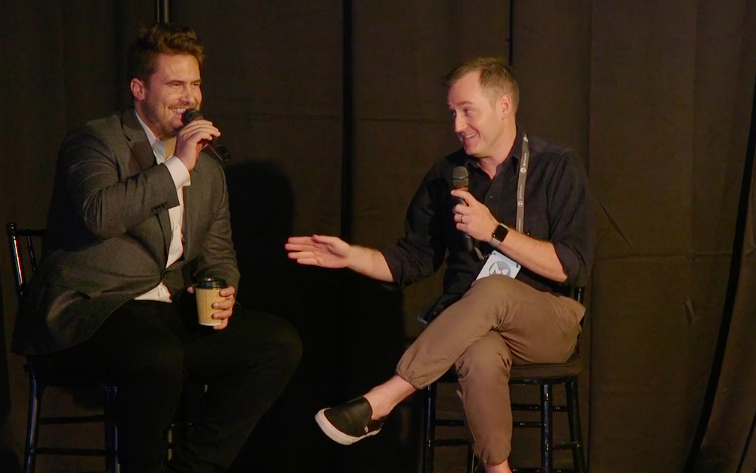
Meet the CMO
Colin: My name’s Colin. I’m the Chief Marketing Officer with a company called Pillpack. The company’s around three and a half years old. How many of you know Pillpack, by the way? Yeah? Thank you. Well, I’ll tell you first what the company does, and then how I came to it. Pillpack packages medications by the dose and they deliver them to your door. And 20 percent of America takes five or more medications every day. There’s a lot of chronic conditions like diabetes, cholesterol, heart medication. Those folks have problems managing their medications, and so what Pillpack does is we package medication.
If you take certain pills Monday at 8:00 in the morning, you take them again at noon – we are a pharmacy, and we are service and we sign people up. So, instead of going to Walgreen’s or CVS or ExpressScripts, you would transfer your prescriptions to us, and then we have a pharmacy that we would package medications and send them to you once a month.
Peter: So, each one of these little squares has a time and a day and everything. You just rip it off and toss it back!
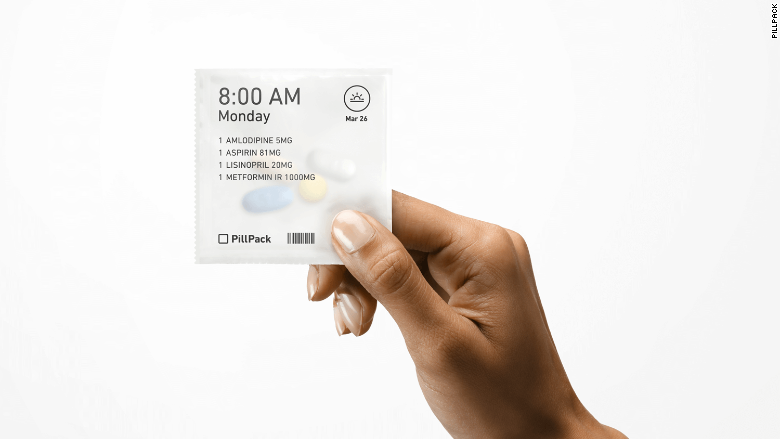
Colin: And what we know, but we need a little more data to feel comfortable telling a big story about is this really helps people with their adherence. There’s a lot of pill reminders, a lot of apps like that. It doesn’t seem that people have a problem remembering to take their pills at a certain time. It’s taking all of them and sorting them and managing them, because people do things like they’ll decide not to take the pink pill. And it’s easier if you tear this package open and you take it.
Peter: Let’s talk about what that experience looks like, top to bottom. What happens when a customer finds out about Pillpack and how do they make this thing happen?
Colin: From the marketing sector? I guess a little over half come through organic, and then the rest of that come through mostly social and Facebook, and then beyond that, on our partners, we have – so, when you have a heart attack, you work with different people that work with your insurance agency to set you up a program, so you have certain medications or diets and things like that. And during that time –
Peter: We’re targeting people with heart attacks, basically. 😉
Colin: Well, they’re already having that conversation, and then we’ll pay for the lead. So during that time, we’ll say, “Hey, if you’d like to have your medications packaged by the dose, we’ll put you on the line with somebody.” From there, we transfer all the prescriptions and start the service. But the service is free…
Peter: Okay, and the service itself, you’ve got an app. Then they sign up and they fill their prescriptions through the app, or what’s that experience like?
Colin: Right. So you have a medical regimen that you get from your prescriptions. You may add or remove OTCs or vitamins. You can do it through an app, through a browser. In terms of mobile for us, we started with an app for acquisition, and we found it didn’t really work, and it was watering down the total customer experience. So what we did instead was we cut acquisition on the app, and now the app is only a point of service for anything that you can do in the service, from when your shipments happen to if you go on vacation and you need to move your shipments around. And now on mobile, most of that happens on social.
Peter: This is what I think is fascinating. We’ve been talking a lot at TUNE about the saturation of mobile apps. There are only so many smart phones, there are only so many apps on those smart phones. We’re getting to the point where consumers are switching out apps on their phones. There’s only so much inventory within those apps, only so many users and eyeballs, and now, if you want to get your app noticed or you want to buy inventory on apps, you’re competing with a lot of other folks. And there’s just not very much wide open space.
Colin: And I think you bring up a really good point, and I think it’s a really good insight. For our business, we use mobile for about – I mean, most of our first touch comes from mobile, so we do a lot of awareness, because I was telling Peter, the metaphor is we’re kind of like a liquor store. You don’t care about which liquor store you get –
Peter: You’re kind of like a liquor store? 😉
Colin: Well, I mean our model is that you are interested in buying a bottle of wine or a gift. You don’t necessarily care about the store, you care about what you’re taking home from it. And similar to the pharmacy, where you get your medication is not as important as that you get your medication. So until you have a moment, in the consumer’s mind, where they have a problem or they change their medication, things just stay pretty stable. So now, back to your point about inventory and going over mobile in a browser, we need to be in front of people, in many cases, so we build up a brand awareness, so that when they have a problem, then they can convert. It’s not a really deep educational cycle. It’s a pretty straightforward product.
Peter: Up until now, when we talk about brand awareness and mobile, there’s a display, a mobile display. There’s also these brand engagement types of apps that have been promoted. But mobile has kind of been a place of performance for the most part, where people are engaging on mobile. There has to be some kind of path, some direction they’re going, some story they’re telling, that takes them from one place to another, or else you’re not really being a part of the funnel, part of the experience.
Talk to me about what does that look like for you guys on the web? If you’re using the real top of the funnel, how are you telling that story? What is the engagement like? Is this just like a video? What kind of ad unit? How are you really capturing these people out on the open web?
Colin: Videos do really well. We also are pretty strong at telling a pretty short, succinct story about what the product does and how it benefits you. We usually see people once on the web. That’s where we get our introduction, and if we have any kind of follow up, it happens on the browser. All our sign-up really needs to happen on a browser, because you have to enter prescription numbers, your doctor, what pharmacy you go to.
It’s about a 15-minute signup experience. So, expecting people to do that over the web is a little bit challenging. So one of the things that we design for is how do you learn about us on the web, and then we can follow up with you in a browser, so tracking that and helping move people to that, or doing click to call to the phone is really important to us.
Peter: We talked about this a little bit at lunch, the reengagement and retargeting is a huge, fundamental part of that whole process, right? We’ve got somebody in the top of the funnel, and maybe they’re really, really interested. But yes, how do we circle back around and make sure they enter in all of their prescriptions, etc?
Colin: Yes, and then as we were talking over lunch, the little interesting factoid is pharmaceutical companies, they can’t use retargeting through Google. They have to go through a third-party provider, like Steelhouse was the company I was trying to think of. It makes it more challenging, because the attribution is sort of between partners and everybody wants to counter it a different way.
Peter: How many of you are doing some kind of retargeting and reengagement focused marketing in mobile? You’ve got one? Maybe two. That’s been a really strange thing, because with apps, reengagement – we measure reengagement with Tune, and it’s a very, very small percentage of what’s actually occurring, compared to acquisition. But it would seem like we’re going to see that grow expansively, as web becomes a bigger part of it.
Colin: At least for businesses like ours, where it’s a service. You’re not trying to sell a wallet or one time ecommerce transaction. I mean, you’re really trying to educate people and bring them on. It’s more of a considered thing. You’re trying to be in front of them and build awareness so you’re a direct point in their life and you can be there for them.
Peter: I’m absolutely fascinated by this business. When you think about – how do I keep someone a part of my program, this long-term subscription type of model, this very specific type of prescription model, a subscription model where you’ve got SKUs – I don’t know how many you said, thousands.
Colin: Many, many thousands of drugs.
Peter: Right, so it’s very complex, and you’re providing that service at a very, very exclusive level. What have you guys built to make that happen? How do you service all these customers with all these different types of needs?
Colin: So, when we started, we licensed an off-the-shelf pharmacy software. Then we systematically broke it up and rebuilt it so it could be the service that we wanted it to be, so we could see different transactions going all the way through the systems, and it helps us optimize how we buy for drugs, it helps us optimize how we provide service to our customers. Now, as the rest of this platform comes online, it’s a little bit like an Amazon Play, because you start with the tools that you can use off the shelf.
Once you acquire the customer – now, pre-acquisition, there are a lot of people that do that better than us, like tracking and all sorts of things. But post-acquisition and serving them in the way that we believe that people need to get their medications, we’ve built it all so then, as things change or as we need to evolve the service to be better, we can. We’re not hamstrung. We don’t have to do business like Salesforce does business.
Peter: When you think about marketing for these customers that are already your customers, versus the ones that are coming in the funnel, the thing that we see in the industry that’s just really, really complicated is usually marketing things are split right down the middle. There’s the product marketing side, that’s something where we charge messaging, push notifications, AB testing, the app experience, and then there’s the user acquisition folks. They’re working with lots of different channels to get more users in the door. What does that look like at Pillpack, and what advice do you have for marketing organizations in general, as they think about piecing these things together?
Colin: So I come to marketing through design. I spent eight years at a design firm called Ideo, and then I ran marketing at a 3D printing company for a year and a half, and then I came to Pillpack. Pillpack actually started out of Ideo. It was a startup in residence. They exchanged a small amount of equity, and we built their entire experience for four months. That’s how I stayed in touch with them, and then I joined them as they gained scale.
I, as the Chief Marketing Officer, work both on the product experience and the acquisition experience and the brand. We have a Chief Business Officer that I kind of make the joke that we make small fires and he makes them really big, because then he works to make sure that this content and the product experience works at scale. But the interesting thing there is now we build additions onto the front of the product that help us with acquisition, because then, as they come through the funnel, they move right into the service flow a lot easier, because we don’t have a separation between marketing and product.
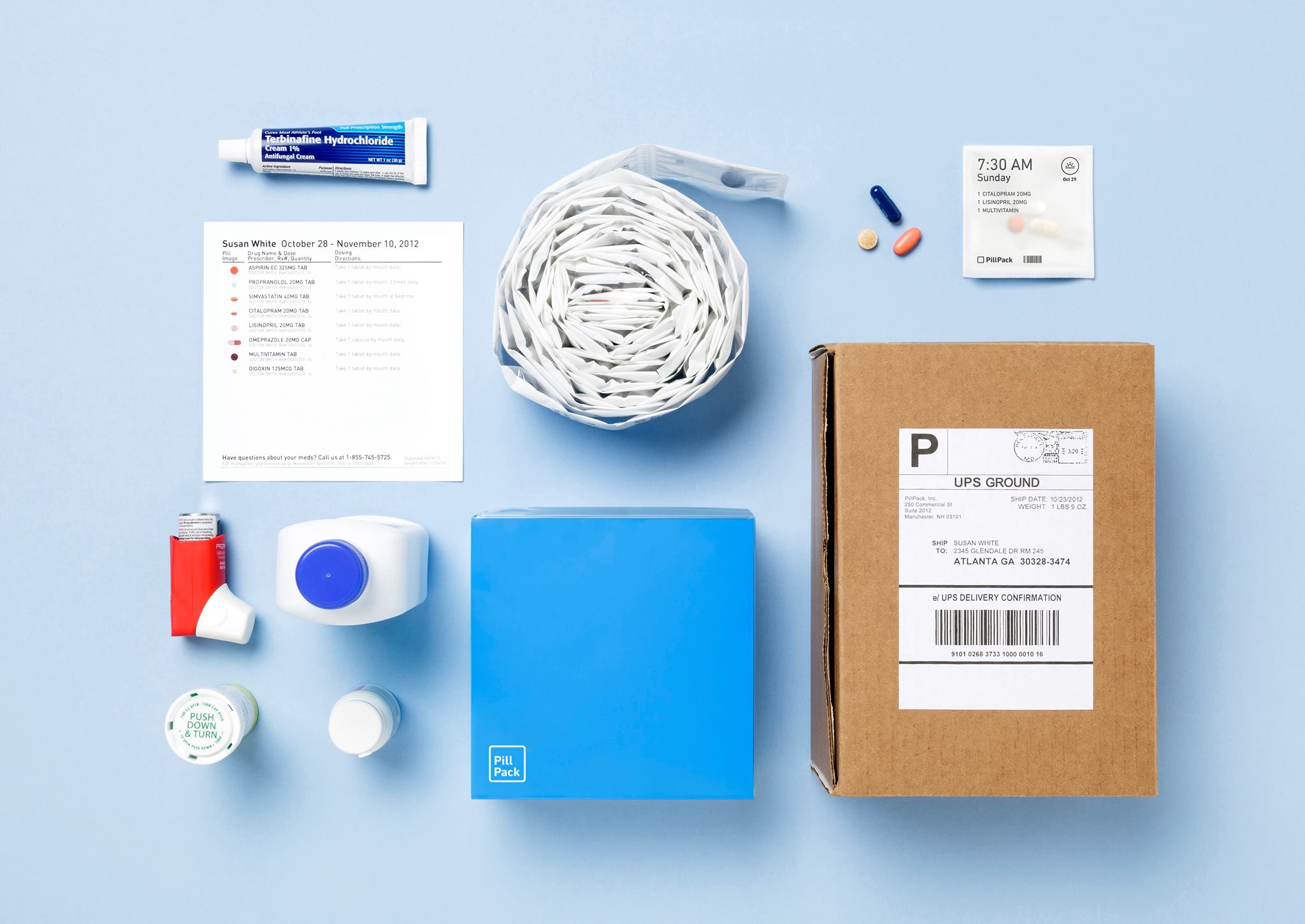
Peter: Yeah, and so as you think about other startups, other companies that you rub up against, do you see that as a common thing? Do you see it as a struggle? What advice do you have there?
Colin: It usually gets decided in your second set of hires, because when you first start and you’ve got the founders, everybody’s doing the same thing, so they’re kind of doing whatever they can. Now, when you hire your person, your marketer with some experience, it really depends on what their theory of the world is and how that works, or the person that runs sales, or the person that runs product. If they’re interested in those other what are traditionally silos, you can be okay. But otherwise, they just don’t know how to operate across those silos, so it’s a legacy thing.
Peter: How coordinated is your push messaging type of activity to the rest of your marketing funnel?
Colin: Yes, I think it could always be better, but we kind of see everything up until – we have a point where we acquire the customer, and then we actually have to turn on the prescriptions and then they start with us. So that grey area, which is a mix of product and acquisition and price, right, so all that stuff helps us get a little bit better with our messaging. There’s a whole messaging funnel we go through to have to support your insurance, if your doctor’s transferred certain prescriptions. It gets quite tedious, so we have to make sure it’s as simple as possible to the customer, because it can just overwhelm them and they’ll leave before we start.
Peter: Let’s talk a little bit about the dominant channel that you said something about earlier, Facebook. What is your experience like on Facebook? How do you optimize Facebook for the best return? How do you think about making it for you the best way?
Colin: I mean, Facebook has worked the best for us. I mean, the thing that’s nice for us on Facebook is, if you see a pillbox and you see those pills in a packet, it’s an obvious offer. That works really well for us. Video works really well for us, and talking about specific conditions. So the more we can talk – because people don’t have a pharmacy problem, they have a diabetes problem. They have a cholesterol problem.
Peter: I wish we had one of your videos right now. Can you describe one, kind of?
Colin: We serve such a broad set of people. The video tries to be very, very simple. It’s in a very neutral house, it’s a lady taking the package out of a box. She’s pulling and tearing the medication and she’s taking it. I think there’s a lot of temptation to be too smart or too clever, and we’ve noticed that when we’ve done that, we just miss the user, or we miss the customer. And so, the more we can realize this is the first time we’re seeing it, we have a very short amount of time to tell the story and trying to be as interesting but non-assaulting on the senses or trying to be too clever or too young is our way forward, because our core customers are like a late-40s female, early 50s. (video)
Peter: Well, and this is kind of the issue of Facebook, is that all the young people are saying, “I’m no longer on Facebook, because my grandparents are on Facebook.” But that’s exactly the point. So, this is actually working in your favor in a pretty massive way.
Colin: Well, one thing that’s like a really small, interesting thing that we found, we cross-referenced all our Facebook profile data with all our customer profile data, and a lot of the people who are men in our system are women on Facebook.
Peter: Wow. Tell me why.
Colin: Because women are signing up their fathers, their husbands, and their sons, and by the time they’ve put it in the actual Pillpack system, their email, which is female on Facebook, with their gender, which is male, in Pillpack. It’s a weird thing that you can start to see.
Peter: She’s like, “I don’t want to keep driving his pills anymore.” It makes total sense.
Colin: Well, you can start to see a caretaker persona showing up.
Peter: That’s amazing. Alright, let’s talk about the future a little bit. Well, maybe a precursor to the future. What do you wish you knew about your marketing and your funnel right now, that you don’t really know or that you’d just like to have a little bit more insight into right now? This is all off the cuff. We did not rehearse this.
Colin: No, we’ve been lucky, because our product was named one of TIME’s most innovative products of the year. I’ll be really humble. You know why? Because it’s called Pillpack. You understand what it is, right? There’s a lot of other really cleverly named companies that just don’t work in that sort of story for time. It’s all a marketing thing. So I think our recognition and the obviousness of the product for the need has helped us. But this leads to your question. Like, what I wish I knew better was how to really effectively hit top of the funnel more. We bring so much in on organic and word of mouth. I’ll build a much bigger business, as we figure out that part of the funnel.
Peter: So, coming also from your user experience, design, even programming background, I think you have amazing insight into what the user experience of marketing should really look like. What do you think’s going to happen in 2017 or moving into ’18, in terms of either user behavior or how marketers can connect to consumers? What’s interesting and fascinating that you think might occur or come about?
Colin: I think, as a general theme, everybody’s getting more and more comfortable that marketers and companies know things about them. It’s becoming ever less creepy to people. And I mean, because there’s so much discourse about Facebook and how much they know, especially after this election, how much they’ve focused your news stories. So, if you take that, now you have just a general understanding that these platforms know and they tailor things to your preferences.
I think you can start to change, in some ways, the way you engage with your user, because before, many, many marketing efforts are trying to hide how much they know. And so, at some point – this is like the YouTube pre-roll thing, in a different way. Like, everybody was apologizing they were running a pre-roll, because it was so boring, and now people are making interesting. So I think, in the same way, people are going to start to take that data and do things that become helpful or interesting and engaging, and if they are helpful or engaging brands, they’ll be fine. If they’re creepy brands, they’re done.
Peter: How do you think the web is going to look for you in 2017, in terms of finding that inventory and the top of the funnel?
Colin: I mean, the thing that we talked about at lunch, I think it’s a mobile browser. It has to be. There’s just most of our customers come first touch through the browser, and they come through mobile. I mean, they’re not going to download an app to learn about our company.
Peter: We talk a lot about the convergence of app and web and how that will likely happen over the coming years, and how apps have become a lot more like the web. They’ll be indexed, you won’t have to download them. The web will become more performance, like accelerated mobile pages. We probably won’t even have an address bar in the future, right? It’ll feel a whole lot more like a native experience, and looking at those two sides, you won’t really see the difference. What do you think that kind of world looks like for Pillpack, when that utility and top of the funnel can really merge and become something that’s just one experience, or is that a future that you think can happen?
Colin: I mean, I think it’ll help us tell more condition-based stories and more understanding – I mean, user context is everything, like background marketing. The more you can understand where they are and where they’ve been and where they’re comig to, the more you can speak to them in a meaningful way. I think that will probably be where I would start.
We have a fairly – because it’s not an extremely complicated product, and for now, it doesn’t have a lot of competition or ways that we have to educate the user on why we’re different from somebody else, it’s mostly awareness and being there when they need us, and showing that it works and it helps people take their medication. So for now, we don’t have that complicated of an education story. Our bigger problem is making sure that they understand how the service works differently, once they start.
Peter: Do we have a couple of seconds for questions, or where are we at? I don’t have a timer. Yes? Okay, right here.
Peter: What about the app was not a good acquisition flow, and what do you find is the best way to acquire customers?
Colin: So, the app started as a pill reminder, and then you could sign up for Pillpack. Unfortunately, there’s 30 pill reminders in the app store, and some of them, they don’t have the acquisition side, so they’re doing all sorts of stuff to optimize and advertise downloads, to get users in different ways, and then they’re selling that list to acquisition marketers in different channels. I think our service and our brand is about helping people stay healthy, and it’s just a deeper experience of understanding the medications you have.
And so, we just found that people that were downloading it to use it as a pill reminder, they were never signing up as a customer. So we were paying to maintain that code base that wasn’t helping grow our company, and we were shortchanging development time that could be spent on building a bigger service point. Where we find the most people, right now, really is we find them through partners, like I mentioned, but also Facebook does a lot for us. It does a lot to help us sell the service, and we see a lot of people that will touch first on Facebook, and then they come to the website organically, because the name is so memorable, we think, that they’ll see it, they’ll learn about it, they’ll watch a short video, and then they may tell their mother about it or they’ll come back to research it on the browser.
We also do a lot of click to call. We have an advisory center, where people will help people talk to the different medications, if we cover them, where their copays are. There’s just a lot of questions people have, and so it’s a pretty human experience to want to talk to somebody about what’s the service. It’s very custom and it’s very much about me, so with that promise to just say, “Oh, fill it out all on the web and everything’s going to be fine,” you kind of miss that moment. So, being able to get somebody on the phone and also talk to them and counsel them through it is a really important part of our acquisition funnel. Good question, thank you.
Peter: Any other questions? Alright, I’m going to wrap up with what is next for your team, specifically? What are you guys building? What do you need to build next, or do next?
Colin: I think we’ve spent the last two years, especially from a marketing messaging standpoint, being a platform for pharmacy and trying to help everybody understand what we do and what we should be known for and why they should think of us. And I think now, to extend that platform and go and help people that have diabetes or high cholesterol or heart medications or you name anything – if you have Alzheimer’s or Parkinson’s, you take pills six to eight times a day. You take pills at two in the morning, right?
And so, knowing those intense experiences, we need to help talk about those stories, I think, from a brand perspective – from three pillars: from an acquisition perspective, we need to get better at talking about those specific stories that are more meaningful for people, so they can think of us and they can share the fact that we exist in their communities as a solution to help them stay healthy. From a brand perspective, we want to normalize conditions. I mean, people are ashamed of their medication. When people get pretty sick, we don’t like to talk about them.
If people do something – if they have a condition and they do something amazing, we either put them on a pedestal as this huge hero or we pity them, and we need them to be – this population is so huge. Everybody needs to be seen as normal, so then we can actually talk about taking medications. The final pillar is from a product perspective. So then, if you have those conditions, you take your blood sugar multiple times every day, you would extend the app to capture that blood sugar, so you have that data, so you can help understand, with the medication, plus the patterns of usage, what does that mean? It’s much more like what’s the full effect of medication that’s having on people?
Peter: So you’re going to start pulling in biometric data over time?
Colin: It could happen.
Peter: Cool. That’s sounds pretty amazing. Hey guys, give Colin a big round of applause. I’m super excited about Pillpack. They really are changing the way that we consume drugs, and it’s great to think about.
View the on-demand recording of the session here.
More CMO insights
- On mobile data, audiences and ads: John Richman, CMO at Dailymail/Elite Daily; Sonny Ganguly, CMO at WeddingWire; Martha Cyhan, CMO at MAC Presents
- On growth, customer experience and building lasting brands: Adam Jaffe, CMO at ABA English; Ian Fillet, VP of Marketing at OfferUp; and Ville Heijari, CMO at Rovio
- On social platforms, app vs web, and the new marketing media mix: Glenn Eisen, CMO at Sling TV; Kieran Hannon, CMO at Belkin; Patrick Yee, CMO at Refinery29; Courtney Harwood, CMO at Keep
Like this article? Sign up for our blog digest emails.
Author
Becky is the Senior Content Marketing Manager at TUNE. Before TUNE, she handled content strategy and marketing communications at several tech startups in the Bay Area. Becky received her bachelor's degree in English from Wake Forest University. After a decade in San Francisco and Seattle, she has returned home to Charleston, SC, where you can find her strolling through Hampton Park with her pup and enjoying the simple things in life.

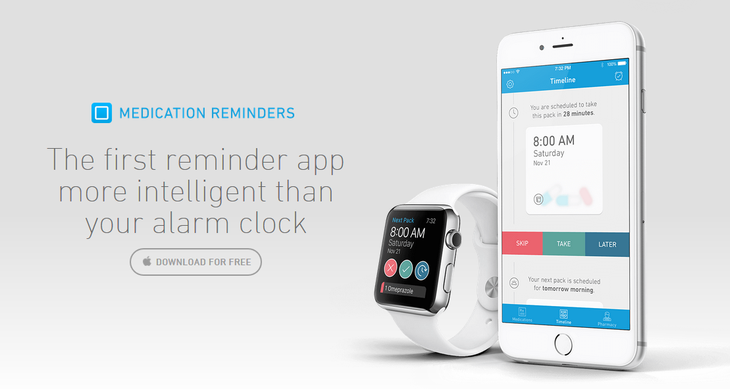
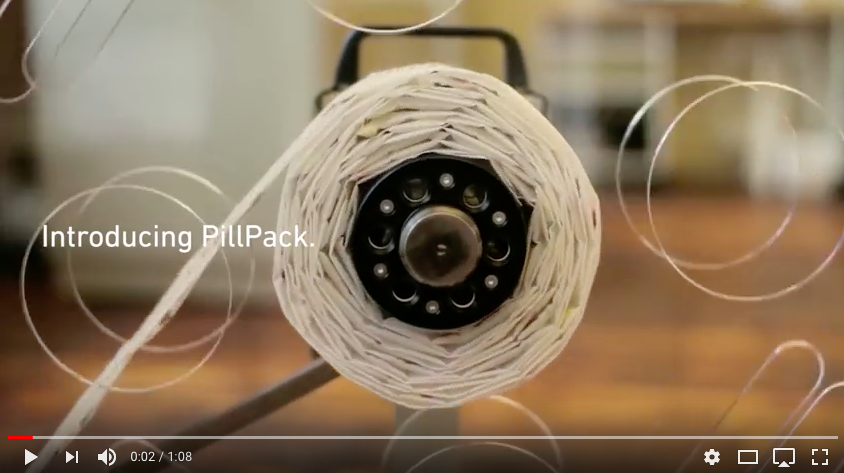



Leave a Reply
You must be logged in to post a comment.